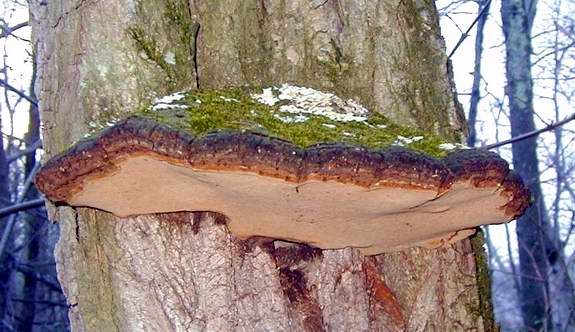|
Common
Name: Artist's Conk, Shelf
Fungus, Tree Tongue, Kofukitake Scientific Name: Ganoderma applanatum (from Latin "flattened") A large, flat-bottomed bracket fungus that is attached at a single lateral stipe to the trunks of broad-leaved trees. The upper surface is marked by concentric light brown rings which become crusted and darker brown as the fungus ages. Potpourri: The name Artist's Conk refers to the fact that the white underside of the bracket turns immediately and permanently brown when it is injured. A small needle can be used to etch light and dark brown (according to the pressure used) while chiaroscuro can be achieved by lightly pressing the surface with the fingertips. Ganoderma applanatum is a perennial polypore that can live as long as 50 years. It has been used for a variety of dietary and medicinal purposes for millennia by hominids and is considered a delicacy by modern gorillas, which have been known to fight over it, causing intragroup dissention until solved by the silverback. The dried Artist's Conk can be cut into large chunks and burned to produce a pleasant smelling smoke that reportedly is an effective insect repellant. A bitter tea can be produced by boiling the fungus for several hours. The tea has diuretic effects and has antimicrobial properties, making it a potential medicinal treatment. It has been shown to be active against a broad range of bacteria, including Escherichia coli (E. coli). |
